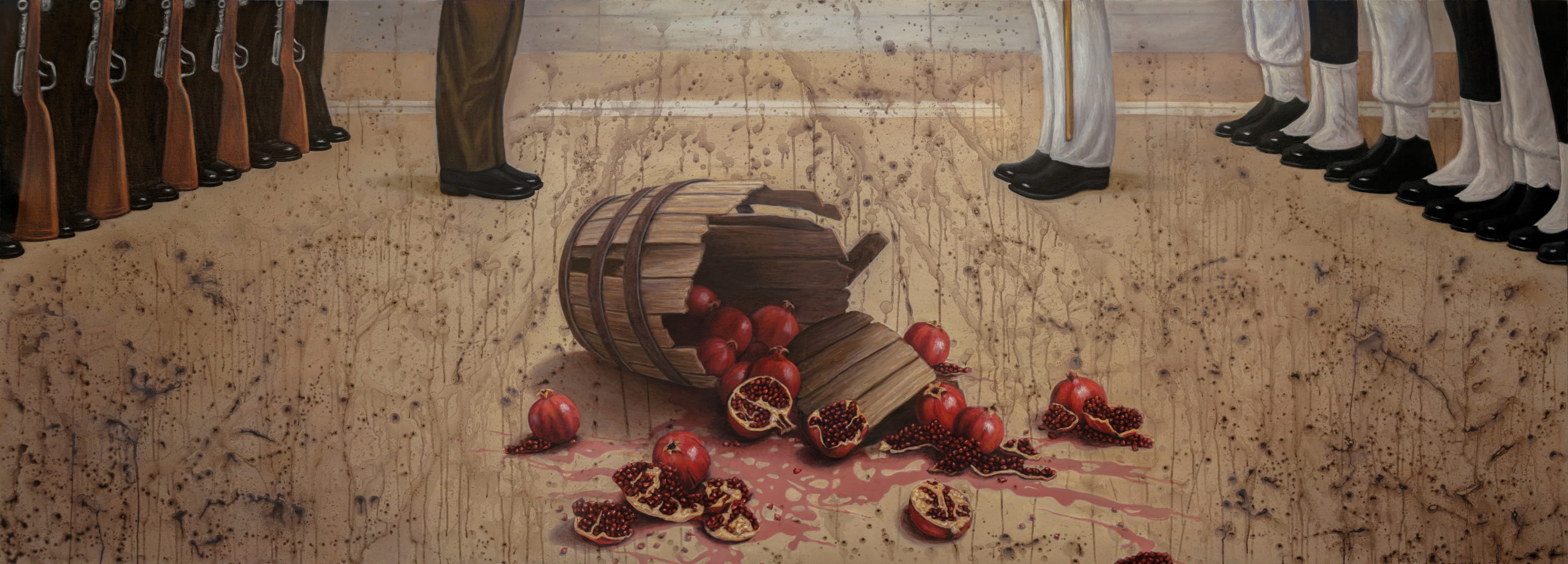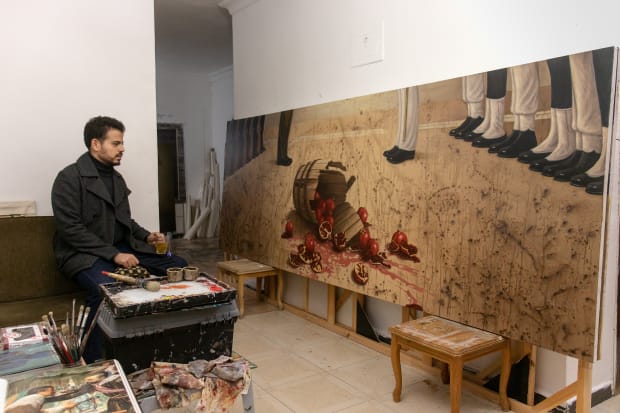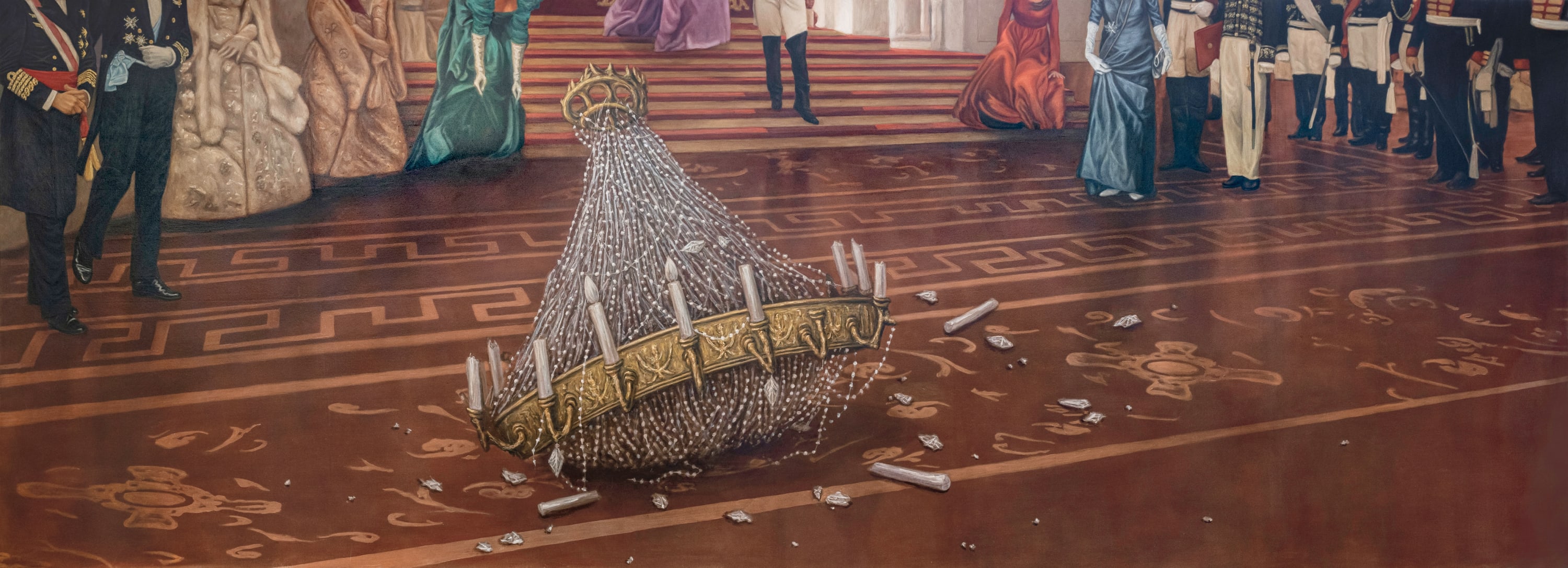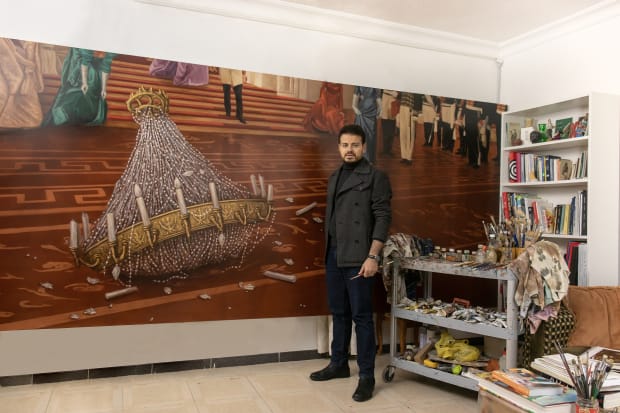-

-

-

-

KH: Themes that are often seen as the ‘big elephant in the room’ recur in my compositions. Colonial legacies, governance, exploitation, and the play and fantasies found in class roles tend to predominate my work. Despite the great regard I give these themes, the primacy while in the studio is given to composing visually compelling work. Seeing a painting or an object working formally gives me the greatest satisfaction. I don’t, however, feel that this is enough until the form and content of my work are finely intertwined.
-

-

KH: My latest commission was, in part, a continuation of my previous series where I depict objects shattered on the floor in the midst of an event. The project presented the perfect opportunity for me to push scale and style variation in my pictorial strategies as never before.
KH: A 5 meters wide piece entitled Shattered Illusions: Royal Court (2022) reveals a host of royal figures and their military guards together at a party in a fictional palace where the catastrophic collapse of a huge chandelier just tainted the event. Entitled For Whom the Bell Tolls (2022), twin 3.5 meters canvases depict a line-up of two army leagues across each other on each side of the canvas, one piece reveals a battleground splattered with a crushed pomegranate barrel, while the other piece is smooshed in the middle with a celebratory 5-tier strawberry cake.
KH: The remaining two canvases are oil and archival printings on canvas, and are entitled The Sacraments and Spoils of a People's Land (2022). These were composed as a pair, each of them portraying a single life-sized figure that appears posed as a glass-topped plinth, mounting symbols of triumph, excess and sacrifice. The piece on the left shows a lady dressed in high society French fashion with a creamy raspberry cake placed on top, foregrounding an archival 19th-century French map of the Arab region. The other canvas on the right features a man in British military attire dating back to the time of British mandate in the Middle East topped with a still-life of the Eucharist elements of wine and bread, also backdropped with an archival Ottoman map of the Levant region with a fading scene of the Holy Land by the British orientalist painter David Roberts.
-

KH: I hope that went encountering such works the viewer enjoys an enriching visual and satirical experience, one that invites humour, reflection and open interpretation. I hope to raise the questions: what kind of world do we live in today and how might we be socially and politically implicated in it?
-








